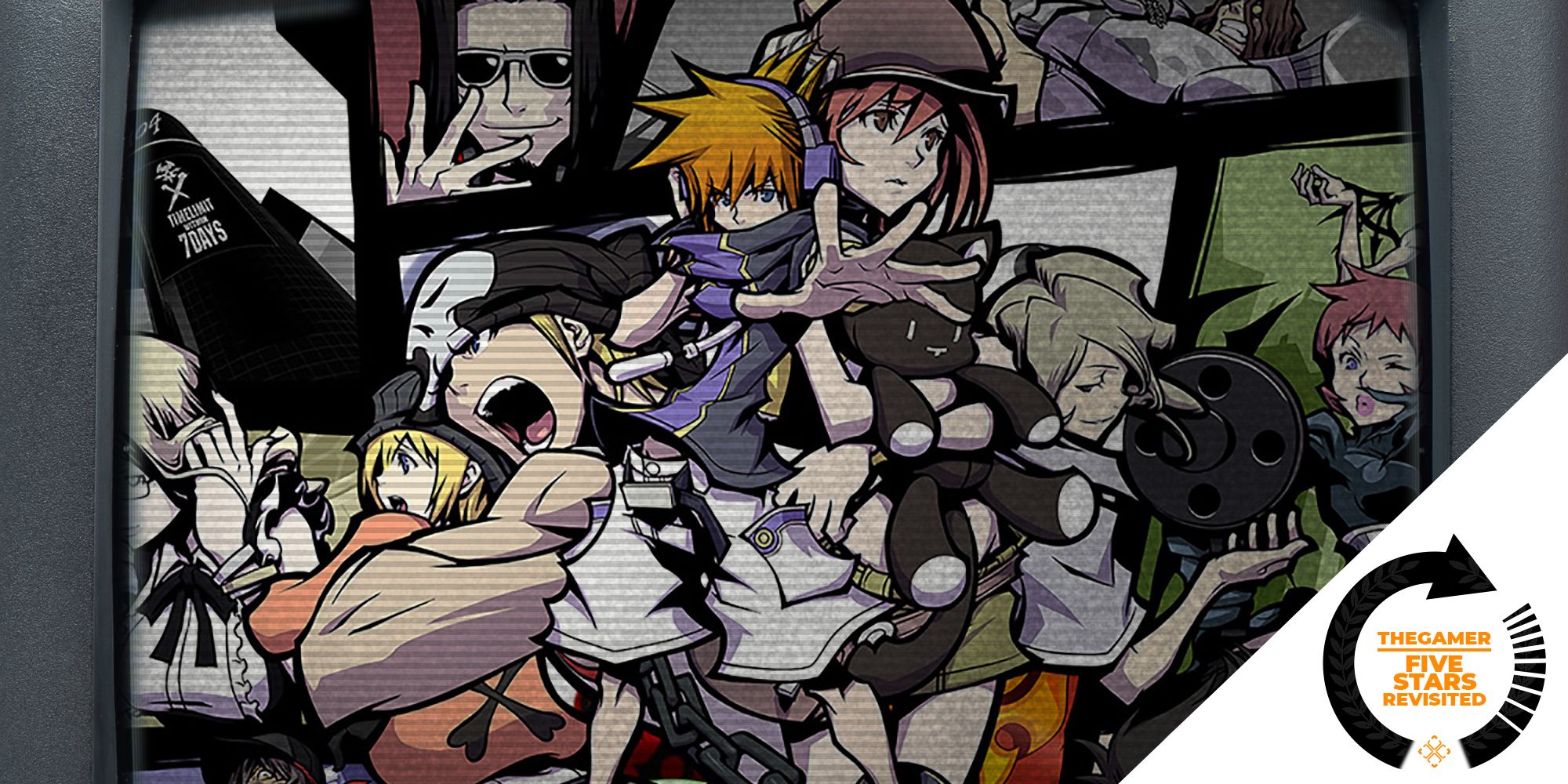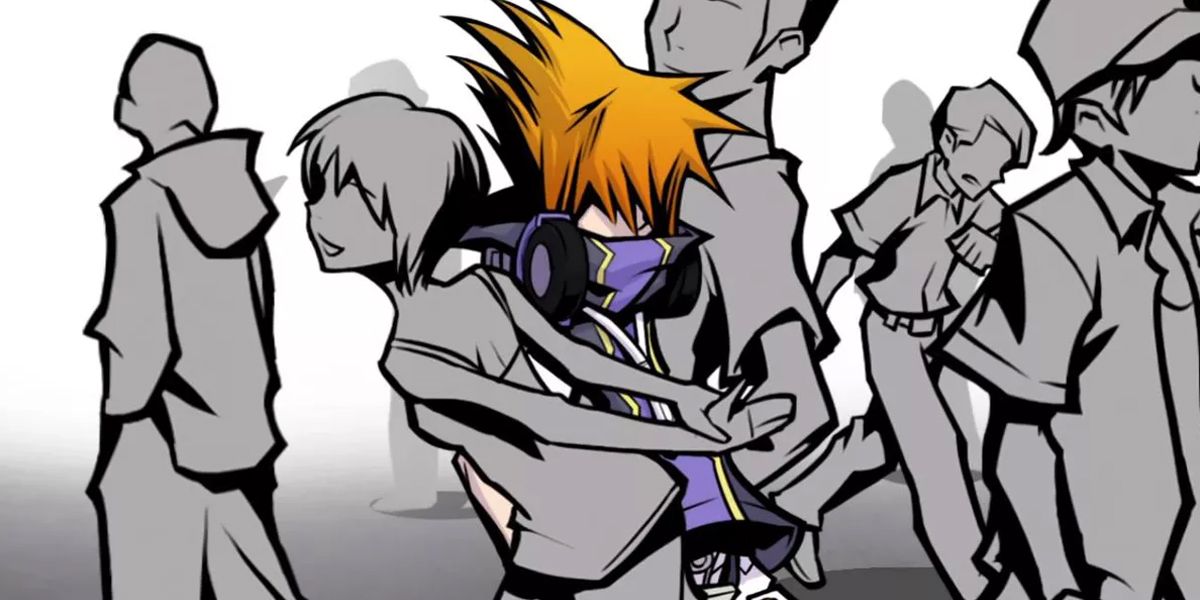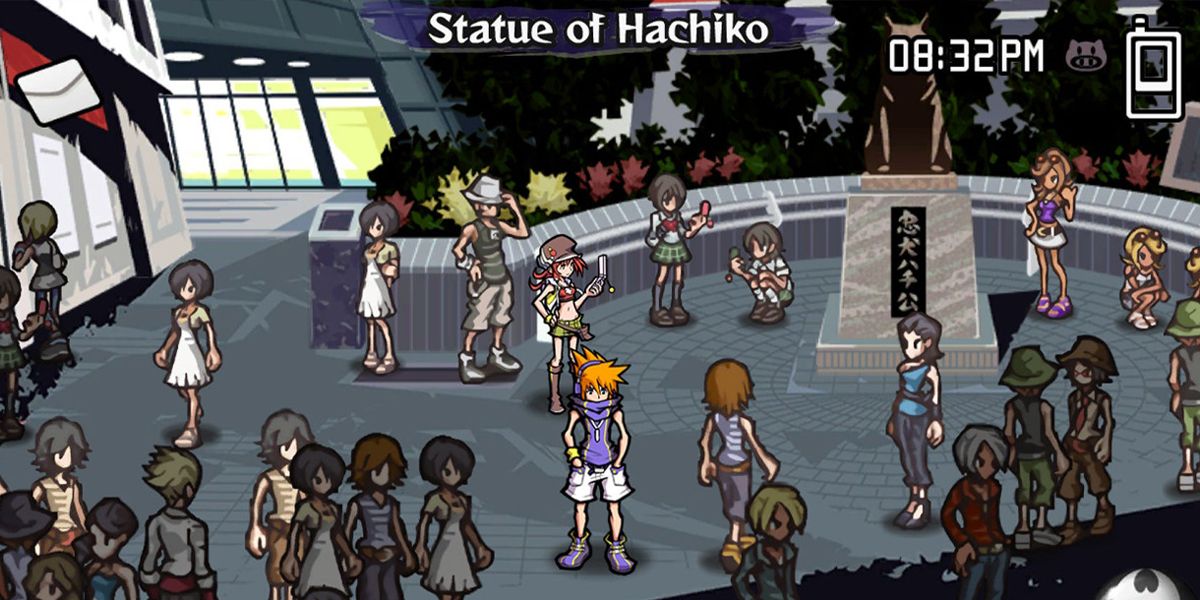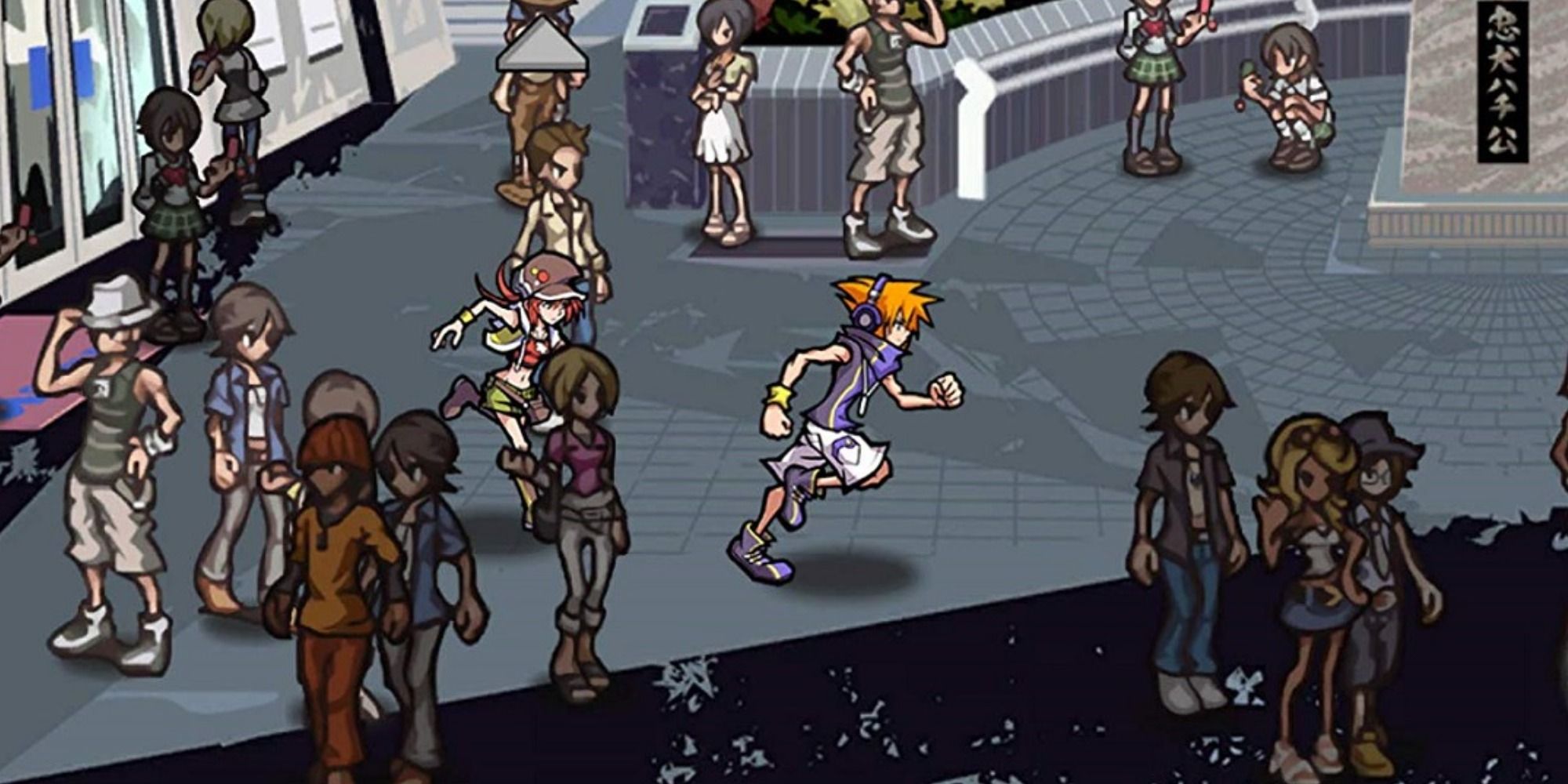This is the first part of a new column on TheGamer where we take a look at games that came out before we were born in 2018, but that we definitely would have given five stars to at review. If we were alive. Which we weren’t.
If you hadn’t heard of The World Ends With You, I wouldn’t blame you. Overshadowed by Square Enix’s greats, namely Final Fantasy and Kingdom Hearts, it usually only gets a mention as an (extremely well) hidden gem. It did get a long-awaited sequel, NEO: The World Ends With You, but Square Enix decided to almost completely ignore its existence, so that was forgotten too. Regardless, it deserves to be up there with Square Enix’s all-timers.
Released on the Nintendo DS in 2007, TWEWY is a product of its era in all the right ways. It isn’t just a game made 'on' the DS. It was for the DS. It uses the console to its full potential — it’s the gaming experience the DS was made for. Not only that, it dives into meaningful themes through its characters and story, culminating in an experience that’s difficult to forget.
The game opens with the bustling city of Shibuya, the streets filled with people. Neku Sakuraba, headphones on, ignoring the world, says, 'Get outta my face. You’re blocking my view. Shut up! Stop talking! Just go the hell away! All the world needs is me. I got my values. So you can keep yours, all right?' It sets the tone right away — this is a teenager who struggles to relate to others and prefers to be left alone. Honestly, not too far away from how I felt at 15 too.
Neku soon discovers that he is part of the Reapers’ Game, where the dead fight to reclaim their status as living. However, Neku doesn’t remember how he died — his memories were taken as his 'entry fee' for joining the game. He also has to team up with a partner to qualify — much to his angsty teenage dismay. The Reapers’ Game then cycles through three in-game weeks, and Neku has a different partner each time: Shiki, Joshua, and Beat.
The relationships between these characters, and how they develop, are some of the strongest I’ve encountered in games — at least, they’ve left a profound impact on me. Shiki is Neku’s first partner, and she teaches him a lot about opening up and trusting others. At first, Neku is standoffish and downright rude towards her. But by the end of the first week, she’s softened his rough edges down. Joshua is Neku’s second partner — Neku’s still sore from the events of the end of the first week, but he puts what Shiki taught him into practice and does his best to get along with Joshua. Even if Joshua himself is… less than delightful to be around. Beat, Neku’s final partner, shows Neku that there’s more depth to the people around him than he might think. Don’t judge a book by its cover, and all that.
Aside from the darkly compelling story and characters, the gameplay is excellent. In battles, you control Neku and his respective partner for that week, making use of both the touchscreen and the DS’ button controls. It’s difficult to get used to at first — I struggled in the first few hours — but it soon becomes second nature. You control Neku on the bottom screen and his partner on the top screen, with a 'puck' passing between them, denoting who will do the most damage at that time.
Switching your focus from the stylus to the button controls, though never neglecting one or the other, takes a lot of concentration — but that also makes for engaging fights, especially in bosses. It works well to represent one of the main themes of the game, too — teamwork. If your partner on the top screen goes down, it’s game over. You can’t just ignore them to focus on Neku.
You can also customise how you fight with Neku — there’s a huge range of pins to equip, from attacking to healing, and how you activate them relies on the touchscreen. Some have you simply swipe the screen with your stylus (horizontally or vertically, depending on the specific pin), some have you draw circles around enemies, and some have you quickly draw lines as if you’re shooting bullets or arrows.
There’s a lot of creativity and freedom in the way you customise your pin decks, and I had a lot of fun just playing around and seeing what all the pins do. As par for the course on the DS, there’s even one where you blow into the microphone to attack. (Wouldn’t recommend using that one though — you get out of breath very quickly.)
While you gain EXP and level up through battles just like any other RPG, if you want to increase your stats, you’ll have to give Neku and his friends food from the various restaurants around Shibuya. This is a minor part of the game — and something you could even skip if you want a challenge — but the voice lines when you give the characters food are some of my favourite parts. Neku reacts neutrally towards most food you give him; Shiki is polite even when given something she dislikes; Joshua is snobby and lets you know if he hates what you’ve given him; and Beat reacts, let’s say, enthusiastically — whether it’s good or bad. The best line, though? 'It’s a party in my mouth!' Beat gets it.
All throughout the game, you’re treated to an incredible soundtrack that exemplifies the urban setting and teenage characters — if you don’t find yourself singing along to Twister, regardless of how little the lyrics make sense, I don’t know what to tell you. There’s a running theory that the soundtrack is what Neku is listening to in his headphones. If that’s true, he has excellent taste.
With all that, I’ve not even mentioned the stunning recreation of Shibuya or the eccentric art style that sets it apart from games both of its era and today. I picked up TWEWY in 2021, long after its heyday in 2007, and it’s easily one of the stand-out games I played that year. When Neku reunites with his new friends in the real world and finally chucks away his headphones, things come full circle. It's cliché, but The World Ends With You is a journey, and I was a different person by the end of it.




